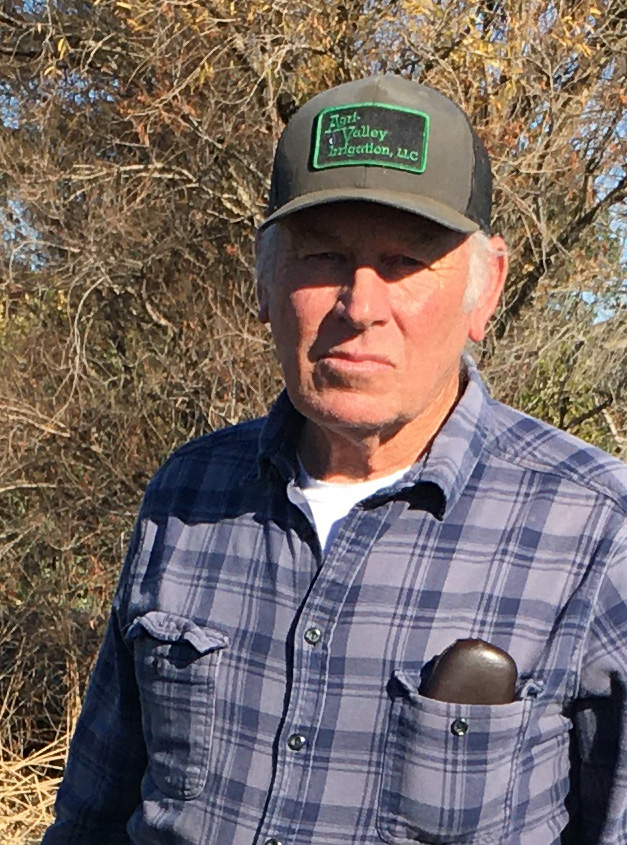
Mar 3, 2021
Delaying harvest worked out well for farmer, mallard hens
The successful Delayed Wheat Harvest Incentive Program paid farmers to delay harvesting and let mallards finish nesting.
Larry Hunn has been farming in Sacramento County for more than 45 years on land his grandfather began tilling in the 1920s.
In the Sacramento Valley, fields of small grains, like wheat and triticale, provide dense nesting cover for breeding mallards. But farmers typically begin harvesting fields in mid-June when the hens are still on the nest and ducklings are beginning to hatch. Harvesting can expose them to predators, destroy nests or strike and kill ducklings.
Hunn read an article in California Waterfowl last year about CWA’s new pilot program called the Delayed Wheat Harvest Incentive Program and participated. By all accounts, the program was a success. Although only a pilot program in 2020, farmers responded enthusiastically. For each acre that qualified, farmers were paid as much as $40 an acre to delay harvesting. Farmers applied to enroll 11% of all the wheat fields in the Sacramento Valley. Hunn delayed harvesting 88 acres of wheat and in the process likely allowed many ducklings to waddle off with their mothers to safer locations. That translates into more mallards in the skies of California.
For more information, and to see a full program report, visit calwaterfowl.org/wheat. California Waterfowl caught up with Hunn recently to ask him about his experience with this new opportunity to help wildlife and offset expenses associated with delaying his harvest.

Larry Hunn
Q: What are the main commodities you grow?
Tomatoes, cucumbers, alfalfa, safflower and wheat.
Q: What motivated you to enroll in the Delayed Wheat Harvest Incentive Program?
A benefit of $30-40 per enrolled acre made sense to me. I was glad to see that was the price because often there are programs that are $5 per acre, and that’s not enough to warrant all the hassle. Makes you think on it a bit and look at the bottom line to see if it’s a good idea to delay the harvest.
Normally, we put in about 400 to 500 acres of wheat. And I applied to enroll all of it, but there was not enough money to go around, so we were allowed to enroll 88 acres. The way it worked out was, I waited to harvest that field last.
Q: What changes would you make to the program based on your experiences?
It would be good to get more acres involved. If there were more money, there would be more participation.
Q: Would you participate in this program again?
Yes. The revenue helps, and if I can also lend a hand to help the mallard and duck population in the long run, too, I surely will.
Q: What do you think are the most important characteristics of a successful conservation program in working ag lands?
It has to fit with the farming practices. If it doesn’t, then farmers can’t participate. And if there is enough monetary reward to offset costs, then farmers will modify behavior. Farming is already tough enough as it is, and we can’t stay in business and lose money solely for the benefit of the environment and wildlife concerns. I know the farmers want to be good stewards of land, but at the same time we have to make a profit, or we won’t be able to farm at all. We want a sustainable environment as well as a sustainable business. That’s why, when we work hand-in-hand with conservation groups like CWA, it’s a win-win for the farmers, the group’s goals and the wildlife.
Q: Do California farmers grow a lot of wheat compared with other states?
The United States produces so much wheat that half is exported. But in California, we can’t grow enough for the state, so wheat is brought in from Oklahoma and Kansas. I am a board member of the California Wheat Commission, and we help promote and market wheat. California grows about 400,000 acres of wheat each year. About 200,000 go toward grain, and then the other 200,000 is green chopped for cattle. California does more milling of wheat than any other state. It’s hard to make money here growing wheat as compared with almond, pecans, walnuts or other crops. But wheat is a good rotational crop. We grow it to rest the land, and it covers our costs.
Q: You’re a duck hunter. What’s your favorite part about waterfowling?
I love watching the way they work around the blind. There is nothing like it when they set their wings and lock up. I love the marsh in the morning, the sunrise, land and water. And seeing the swans, snow geese and specks, the experience is enjoyable. Sometimes you don’t shoot anything, but the fresh air and camaraderie with the others in the tank is priceless.
Q: Your farm is near Stone Lakes National Wildlife Refuge. Are you seeing more breeding pairs in the area?
There are breeding ducks in the Stone Lakes area, but not as many as we’d seen in the past. The honker population has blown up. I think many are breeding here. In February and March, the snows and specks show up. Their populations are exploding as well. They come in for a few weeks and eat up our wheat and alfalfa. They trod it all down, too. Then they move on. The spoonie population is way up at the refuge.
Q: Last thoughts on your participation in the Delayed Wheat Harvest Incentive Program?
I was surprised how many farmers were interested. I think that shows that the incentive was effective. It was enough money to make it worth their while to get involved and help.


